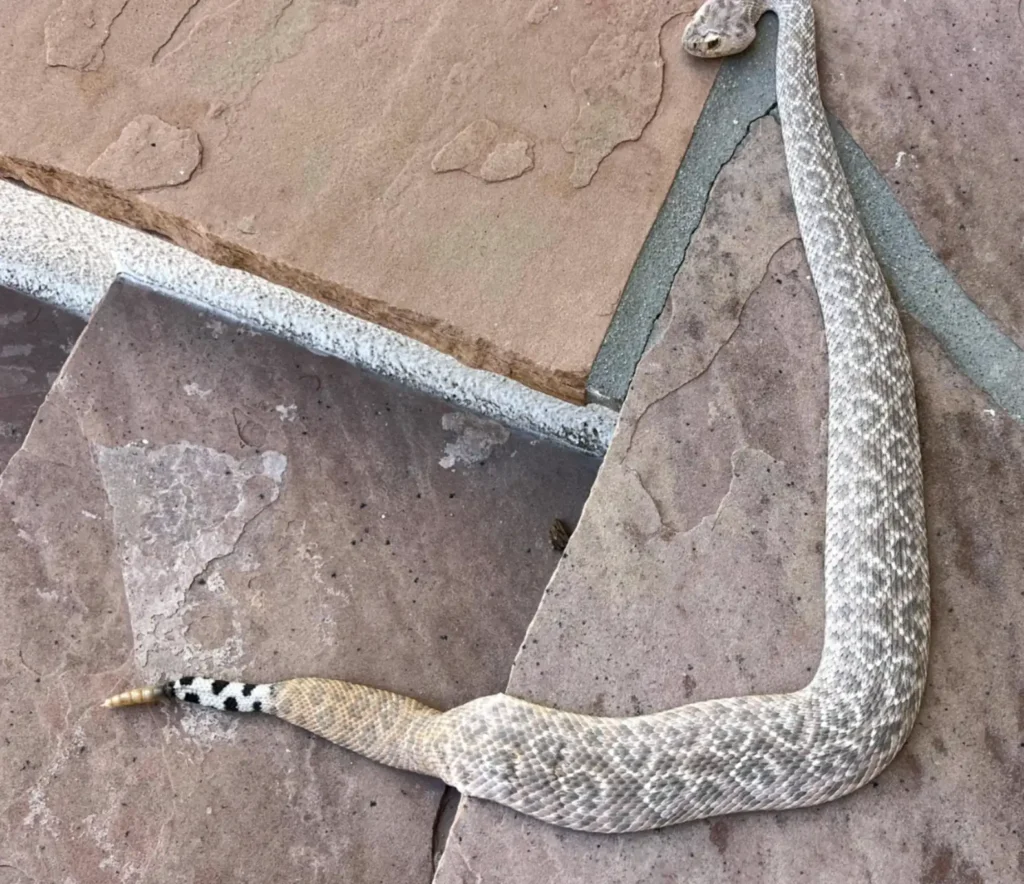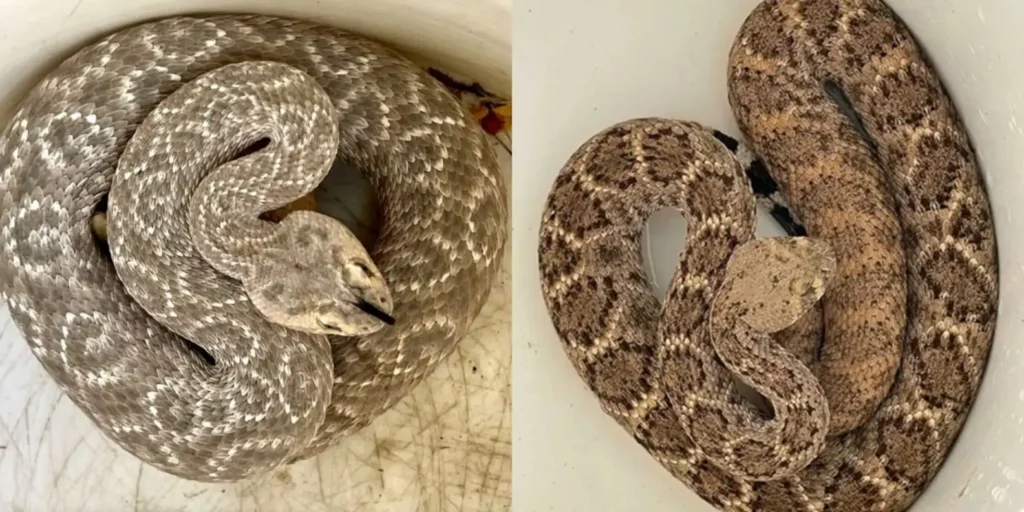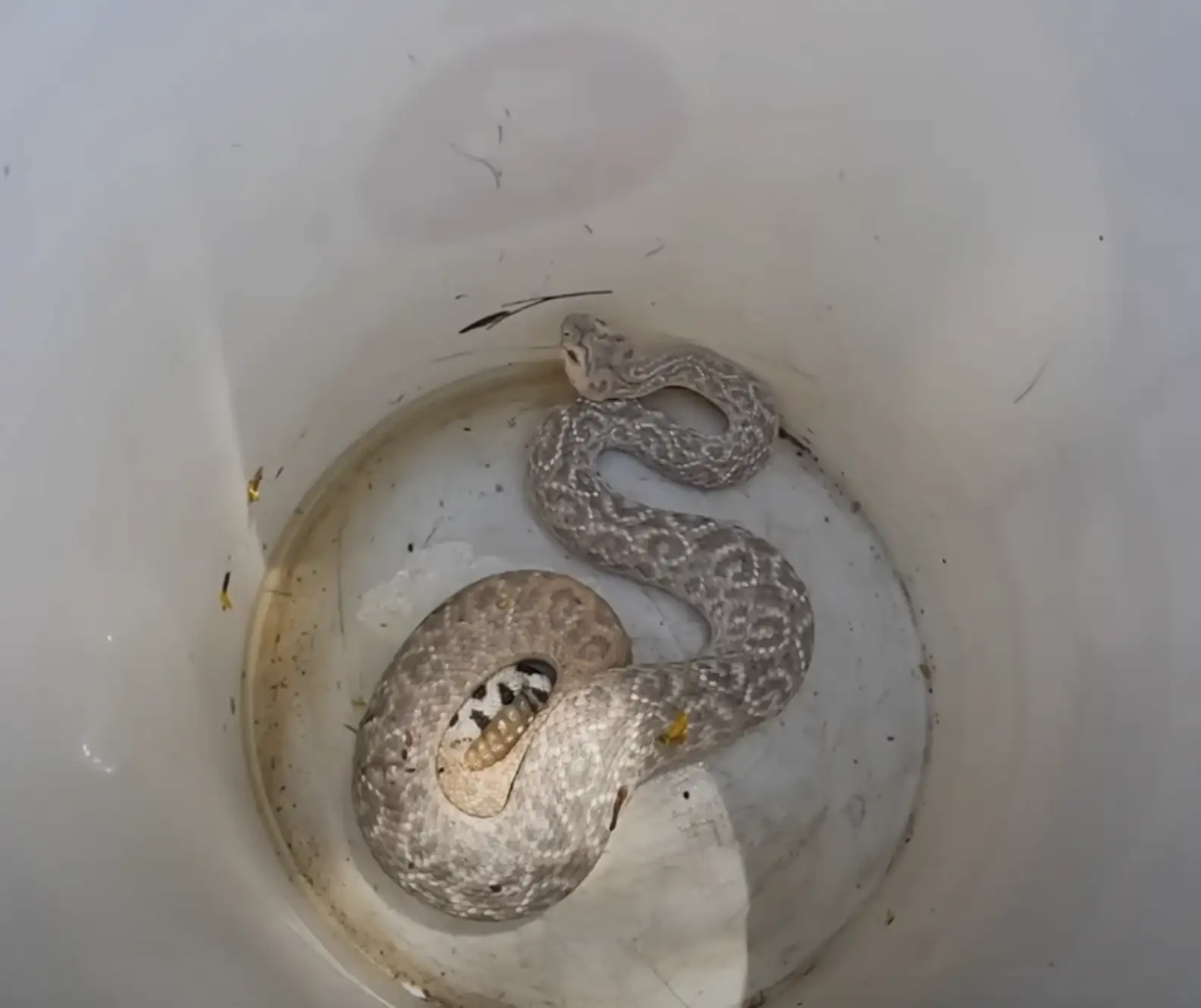“We were shocked.”
Rare Rattlesnake With One-of-a-Kind Pattern Discovered in Arizona Stuns Experts
Snake experts in Arizona are no strangers to encountering rare reptiles, but even the seasoned team at Rattlesnake Solutions was left speechless after receiving a photo of a western diamondback rattlesnake like no other they’d ever seen.
“We were shocked,” said Bryan Hughes, owner of Rattlesnake Solutions. “We weren’t quite sure what we were looking at.”
The snake in question, discovered by wildlife responder Marissa Maki, had a never-before-seen skin pattern that immediately set it apart from any western diamondback known to science.
A Pattern That Defies Nature

Rather than the typical diamond-shaped markings, this snake’s body was covered in disconnected circles and rings, with the pattern appearing to radiate outward instead of running in the usual symmetrical rows. Even more unusually, the facial stripes typical of the species were entirely missing, and the snake had peach-toned skin between the rings — most pronounced near the tail.
“Each side of the snake’s body has its own version of the pattern, but they don’t intersect,” Hughes explained. “It looks like a mirror-image mutation, as if nature didn’t finish connecting the dots.”
What Caused This Rare Mutation?
Though the cause of the unique markings remains uncertain, Hughes and his team suspect it may be linked to habitat fragmentation and reduced gene flow due to land development in the region.
“We’ve found other instances of this mutation happening in the same general area,” Hughes noted, referring to old photographs taken by others who had spotted similar anomalies.
Such genetic quirks could be the result of inbreeding within isolated populations, a side effect of urban expansion encroaching on the snakes’ natural habitats.
Safe at the Rescue — and Turning Heads

Because the snake was found in a high-risk area for both humans and reptiles, she’s now being safely cared for at the Rattlesnake Solutions facility, where experts are studying her closely and documenting her features.
“She’s safe and sound, and she’s absolutely blowing people away,” Hughes said.
The rescue team plans to learn as much as possible from this rare specimen, with the hope that understanding such mutations can shed light on reptile genetics, habitat stress, and how environmental changes influence wildlife.
A Gentle Reminder from Nature
This fascinating discovery underscores the importance of protecting natural habitats and the creatures within them — not just for their safety, but for what they can teach us about evolution, resilience, and genetic diversity.
“She’s a mystery,” Hughes said. “And one we’re honored to learn from.”
